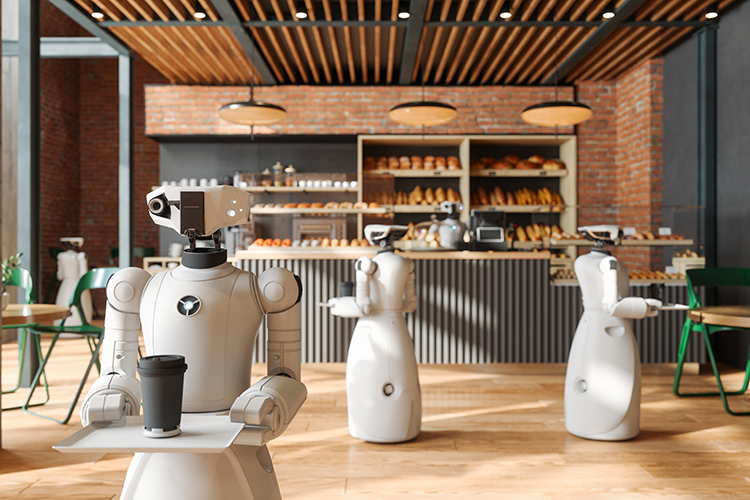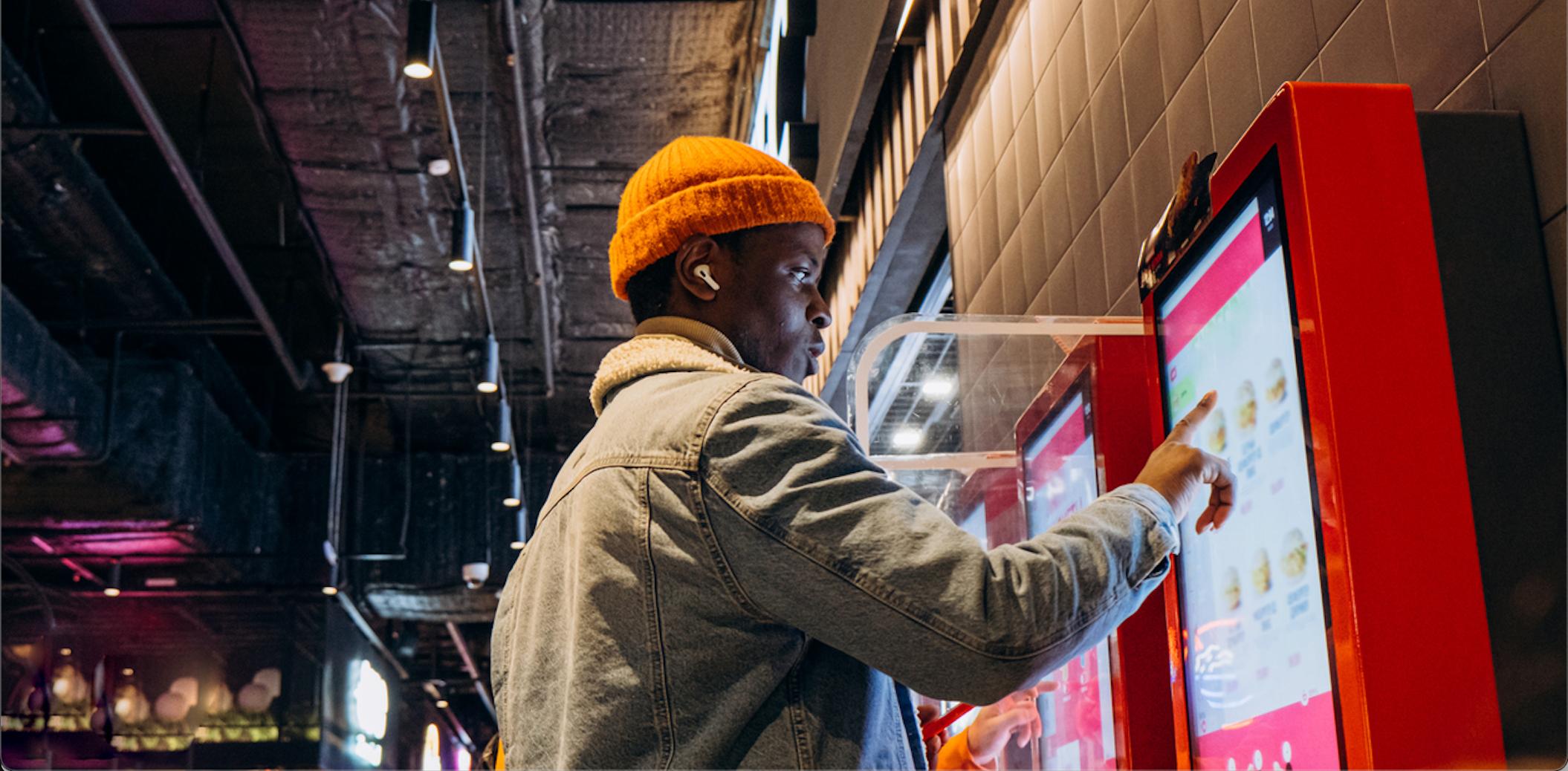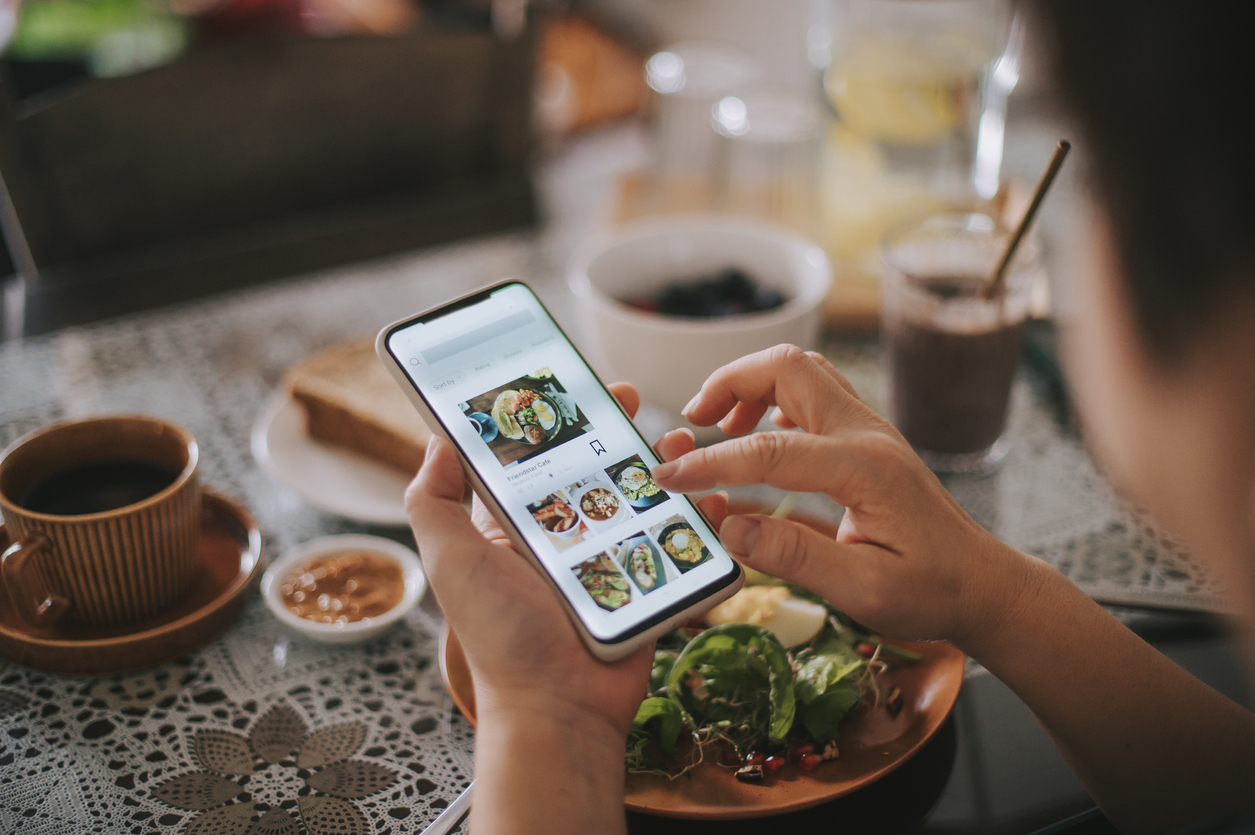To gain a competitive edge restaurant operators are turning to innovative technologies like Chat GPT and AI. By utilizing these cutting-edge tools, independent operators are able to streamline their operations, enhance customer service, and drive business growth. But how exactly are restaurants using these new technologies to improve their businesses?
In this blog, we’ll explore some of the most exciting and creative ways restaurant operators utilize artificial intelligence, from automating routine tasks to gaining valuable insights into customer preferences.
What is Chat GPT, Bard, Etc.?
Chat GPT is an advanced language model based on artificial intelligence developed to generate original, relevant text. Developed by OpenAI, ChatGPT can perform various natural language processing tasks, including translations, summarisation, and chatbot conversation.
The use of algorithms and statistical models to allow computer systems to improve their performance on a specific task over time is called machine learning. Artificial intelligence, on the other hand, entails the creation of computer systems that accomplish tasks that normally require human intelligence, such as decision-making and problem-solving.
Several sectors have extensively used AI technology, adopting and implementing it to automate content duties and instantly generate new ideas. Like other businesses, restaurants are trying to use this modern technology to analyze customer data and preferences, streamline ordering and delivery processes, and even develop personalized menus based on individual preferences. Restaurants can improve business efficiency, customize their customer's dining experience, and increase their overall revenue by leveraging the power of AI.
How restaurants are using Chat GPT & AI
As the technology becomes more mainstream more restaurants and food delivery businesses are now turning to Chat GPT and other AI language processing technologies - Here are five ways in which restaurants are using these technologies:
AI-driven reservations, directions, & ordering assistance
AI-Powered Reservations & Bookings. AI-powered customer service solutions can now handle customer inquiries and bookings, freeing up your staff's time to concentrate on other duties.
AI-Powered Directions. Restaurants benefit from AI-powered voice assistants that give customers directions to the restaurant, making it simple for lost customers to arrive at your restaurant without distracting your staff members.
Chatbot and AI Voice Ordering/Delivery. Give customers the convenience of chatbot and voice ordering options when placing orders, processing payments, and providing delivery updates. Using AI-powered voice assistants, customers can verbally place orders through their smart speakers or other voice-enabled devices just like if they were talking to one of your staff members over the phone. This reduces the need for employees to take orders manually and provides easy access to real-time status updates to your customers.
Reduced response times. AI-driven responses assist restaurants by responding to customer queries and complaints rapidly in a predictable and consistent manner. AI-powered chatbots can handle numerous customer queries at the same time, shortening response times and increasing customer satisfaction. This is especially useful during peak times when staff cannot promptly respond to all customer queries. According to an Oracle study, KFC has unveiled an AI voice-based robot that is even capable of handling order changes and substitutions.
Personalized responses. AI can provide personalized answers to customers. Restaurants can now use customer data to make personalized recommendations, deliver customized promotions, and react to customer inquiries.
Consistency in customer experience. AI can also help restaurants provide clear, consistent responses to customer queries vs the risk that staff members responding would give inconsistent responses or incorrect information.
How AI can reduce a restaurant staff workload
Using AI-powered chatbots and voice assistants to handle customer queries and bookings has helped restaurant employees lower their workload and labor costs. There are several primary methods by which AI-powered options can help restaurants reduce employee workloads:
AI-driven Kiosks. AI-powered kiosks are being used to accept orders, process payments, and provide a personalized experience to customers. At Wendy’s, for example, kiosks enable customers to customize their orders while providing nutritional information. These kiosks lower staff workload while providing customers with a more efficient and potentially personalized purchasing experience.
Streamlined ordering process. Restaurants have implemented AI to simplify the ordering process. Burger King is starting to test using AI to anticipate a customer's order based on their previous order history and location. This reduces a customer's time to place orders and enables staff to prepare food more efficiently reducing wait times.
Drive weather & event-based menus. Weather and event-based options are also being created using AI. Starbucks is testing using artificial intelligence (AI) to create seasonal menus based on weather patterns and local events. This helps restaurants improve customer satisfaction by offering appropriate and timely menu choices.
How AI can increase customer satisfaction
AI in the restaurant business increases customer satisfaction and provides a better overall customer experience. Here are some examples of how AI is accomplishing this:
Faster delivery times. AI assists restaurants in optimizing their transportation processes, allowing for faster delivery times. You’ve probably seen how Domino’s employs artificial intelligence to optimize delivery routes, reducing the time it takes for customers to receive their orders. In New Zealand, Domino’s Pizza is testing an AI delivery service using a robotic unit – a three-foot-tall carrier with storage space for ten pizzas – that drives autonomously within a 12-mile range.
Reduced errors. AI aids in the reduction of errors in the ordering process, resulting in fewer errors in client orders. KFC and McDonald’s are well-known examples of how AI suggests menu items based on prior orders, reducing the time a customer spends ordering their food.
Loyalty programs integration. Starbucks employs artificial intelligence to track and analyze customer purchases to provide personalized offers and promotions to customers. This assists restaurants in automating the massive job of collecting and tracking data for customer rewards, and customers can receive and redeem rewards without assistance.
Chatbot for customer service and feedback. AI-powered chatbots offer real-time customer assistance and feedback, enhancing the customer experience. Chipotle, for example, employs AI-powered chatbots to provide real-time support and personalized recommendations to customers. This contributes to a more efficient and pleasant client experience.
Improved customer experience. McDonald’s also uses AI-powered kiosks to provide customers with personalized recommendations and menu options based on their previous orders.
Data collection and analysis. AI is also used to gather and analyze customer data, which provides restaurants with valuable information about customer preferences and complaints. Burger King employs artificial intelligence to analyze its customer feedback and provide insights into how to improve their customer experience.
According to an Accenture study, using AI in the restaurant business can increase customer satisfaction by 10-15%. Furthermore, the researchers discovered that AI could boost restaurant revenue by up to 70%.
How AI helps to reduce a restaurant's costs
AI Inventory management. Efficient inventory management is critical for lowering food expenses and reducing food waste. Restaurants can use inventory management software to monitor inventory levels in real-time and make data-driven decisions about buying, menu planning, and pricing. For example, if a restaurant observes being frequently overstocked on a particular item, they can adjust their ordering habits to reduce waste and save money.
Reduced food waste. Food waste is a significant expense for restaurants, accounting for up to 10% of total costs. Restaurants can save money and improve their bottom line by adopting food waste reduction strategies such as portion control and menu planning.
Labor reduction. Using a self-ordering system or mobile app can eliminate the need for staff to take orders, allowing existing staff to focus on more important tasks.
AI-driven restaurant marketing
Develop copy. Effective copy is critical for engaging prospective customers and conveying the brand message of a restaurant. ChatGPT can assist restaurants in developing content for their website, social media, and email marketing.
Menu descriptions. AI-powered language processing systems can help make menu descriptions more enticing by introducing best practices within their creation.
Marketing Ad Copy. Using ChatGPT to generate ad copy has become a standard practice for marketing a restaurant’s offerings and attracting new customers. All you have to do is give ChatGPT the appropriate instructions.
Improve SEO. ChatGPT, as an AI tool, can recommend methods for increasing your website’s visibility on search engines like Google. It can provide you with optimized web material and metadata. It can provide you with specific keywords to help you create high-quality material that will rank well by being optimized for Google's algorithms.
Translate content. Restaurants serving diverse communities or attracting international visitors may benefit from translating their website content or menu into other languages. This is readily automated with ChatGPT.
Build buyer personas. Buyer personas are fictitious portrayals of a restaurant’s perfect customer. ChatGPT can assist you by creating comprehensive buyer personas. You can ask ChatGPT to tailor your marketing messages based on these personas to better connect with your target audience.
Examples of restaurants using ChatGPT/AI
Here are some examples of how some of the biggest fast-food chains in the world are using AI to improve their business:
McDonald’s
McDonald’s has used AI to enhance customer service and streamline operations for a several years. In 2019, the fast-food giant acquired Dynamic Yield, an AI-powered personalization business. Since then, they’ve been using technology to personalize the customer experience by suggesting menu items based on prior orders, time of day, and other factors. They’ve also installed AI-powered drive-thru menus that can change based on real-time traffic and weather data.
Domino’s Pizza
Domino’s has been using AI-powered chatbots to take orders and answer customer questions since 2017. Their “Domino’s AnyWare” platform allows customers to order pizza using voice commands, social media messaging, or smartwatches. The platform also allows customers to track their orders in real-time.
KFC
To personalize the user experience, KFC has been experimenting with AI-powered facial recognition technology. In China, the fast-food chain has opened the “KPRO” concept store, which uses facial recognition to suggest menu items based on the customer’s age, gender, and facial expressions. They’ve also used artificial intelligence to analyze social media data and customer feedback to improve their menu options.
Taco Bell
To improve the ordering experience, Taco Bell has introduced AI-powered chatbots on their website and mobile app. The chatbot allows customers to place orders, customize menu items, and get answers to commonly asked questions. The chatbot can also recommend menu products based on the customer’s preferences and order history.
Advantages of using Chat GPT for restaurants
Cost-effective
One of the most significant benefits of using Chat GPT for restaurants is that it can be a low-cost option for customer service and interaction. Chatbots powered by AI help restaurants save money by automating repetitive chores and reducing the need for manual labor. Instead of having a dedicated team of customer service representatives, a chatbot can handle customer queries, take orders, and provide suggestions 24/7.
Increased efficiency
ChatGPT can also improve efficiency by handling numerous requests concurrently, resulting in faster reaction times and shorter customer wait times. A chatbot, for example, can accept orders and payments simultaneously, reducing the time it takes customers to place an order and the strain on employees during peak hours.
Improved customer satisfaction
Chatbots can also boost client satisfaction by providing personalized and timely service. Chatbots powered by AI can recall customer preferences, order history, and dietary restrictions and make suggestions based on that data. This gives customers a personalized experience and makes them feel valued - increasing loyalty and happiness.
Better insights into customer preferences and complaints
Chatbots can gather customer preferences, complaints, and feedback data, providing restaurants with useful insights. This data can be used to enhance menu offerings, respond to customer complaints, and develop targeted marketing campaigns. A restaurant, for example, can use chatbot data to identify popular menu items and adjust its offerings appropriately.
Increase sales
Finally, chatbots can help restaurants boost sales. Chatbots have been proven to help increase the average order size by providing personalized suggestions and consistently upselling. A chatbot, for example, can reliably suggest side dishes or desserts based on a customer’s order history or dietary preferences, resulting in increased restaurant sales.
Challenges of using ChatGPT for restaurants
Technical difficulties
Chatbots at this stage are still likely to encounter technical issues or glitches, resulting in customer service delays or inaccurate answers. A chatbot, for example, may fail and provide correct information about menu products, resulting in customer dissatisfaction.
Inaccurate responses
Another issue is the chatbot’s potential to provide incorrect answers. Chatbots may be incapable of comprehending the nuances of human language or context, resulting in incorrect or perplexing answers. A chatbot, for example, may misinterpret a customer’s request for a gluten-free option and recommend a dish that includes gluten.
Language barriers
When using an AI like Chat GPT or Bard for restaurants, language differences can also be an issue. Chatbots may be unable to properly comprehend or accurately respond in multiple languages, limiting their utility in multilingual settings. For example, a chatbot designed for an English-speaking audience may be unable to properly respond in Spanish or Chinese.
Privacy concerns
When using ChatGPT for restaurants, privacy concerns may emerge. Chatbots may gather and keep customer data, raising privacy and security concerns. A chatbot, for example, may gather personal information from customers, such as their name and email address, and store it in a database without their knowledge or permission.
Job displacement
Human job displacement is another possible issue. ChatGPT may eventually replace human employees in customer service and other areas as it becomes more sophisticated and capable of handling increasingly complex tasks. This can lead to employment losses and other economic consequences.
Difficult to manage
ChatGPT can also be challenging, especially for small or inexperienced restaurant owners. Setting up and managing a chatbot can take time and require technical expertise that is not always readily accessible.
Maintaining a balance between human and automated interactions
Finally, finding a happy medium between human and automated encounters can be difficult. Restaurants must balance utilizing chatbots for routine tasks and offering human interaction when necessary. A customer, for example, may prefer to talk with a human representative rather than a chatbot if they have a complaint or a complicated question.
Conclusion
Finally, and for a good reason, the use of ChatGPT, Bard, and other AI’s in the restaurant business is still in its infancy, but is rapidly expanding. Even in its early stages, but implementing these technologies, restaurant operators can improve their operations, improve customer service, and promote company growth.
The advantages of AI are numerous, ranging from cost reduction and inventory optimization to improved customer satisfaction and valuable insights into customer preferences.
While some drawbacks exist, such as technical difficulties, incorrect responses, and privacy concerns, when used properly the benefits can far exceed the disadvantages. We can expect to see even more creative and effective ways for restaurant operators to use artificial intelligence to better their businesses in the future as innovation and development in this field continues.





